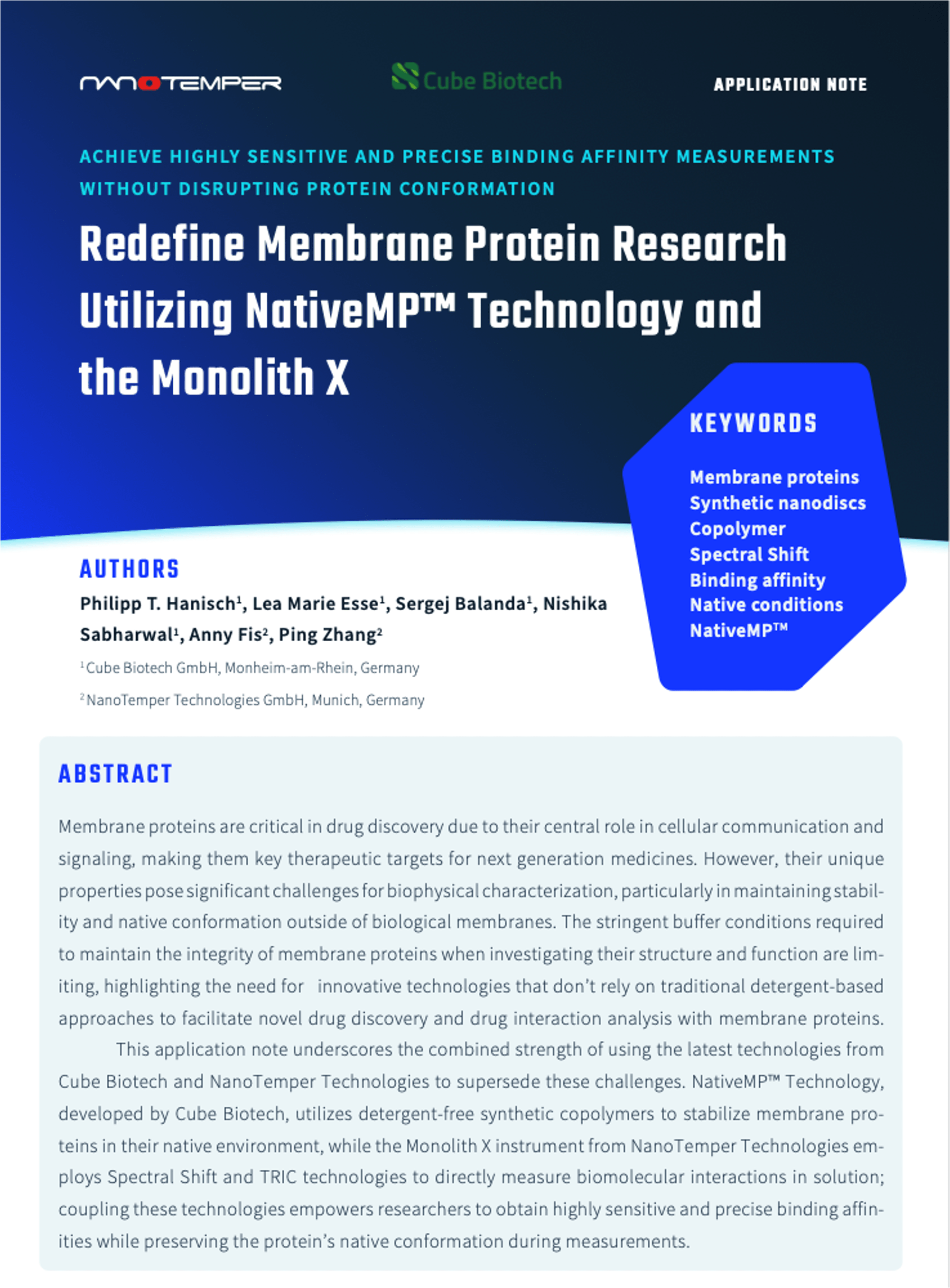Yoshida, K., Nagatoishi, S., Kuroda, D., et al.
Biochemistry 2019, vol: 58(6) doi: 10.1021/acs.biochem.8b01194
Abstract
The affinity of a ligand for a receptor on the cell surface will be influenced by the membrane composition. Herein, we evaluated the effects of differences in membrane fluidity, controlled by phospholipid composition, on the ligand binding activity of the G protein-coupled receptor human serotonin 2B. Using Nanodisc technology to control membrane properties, we performed biophysical analysis and employed molecular dynamics simulations to demonstrate that increased membrane fluidity shifted the equilibrium toward an active form of the receptor. Our quantitative study will enable development of more realistic in vitro drug discovery assays involving membrane-bound proteins such as G protein-coupled receptors.
Topics: Monolith, MST, Membrane Proteins, Publications










